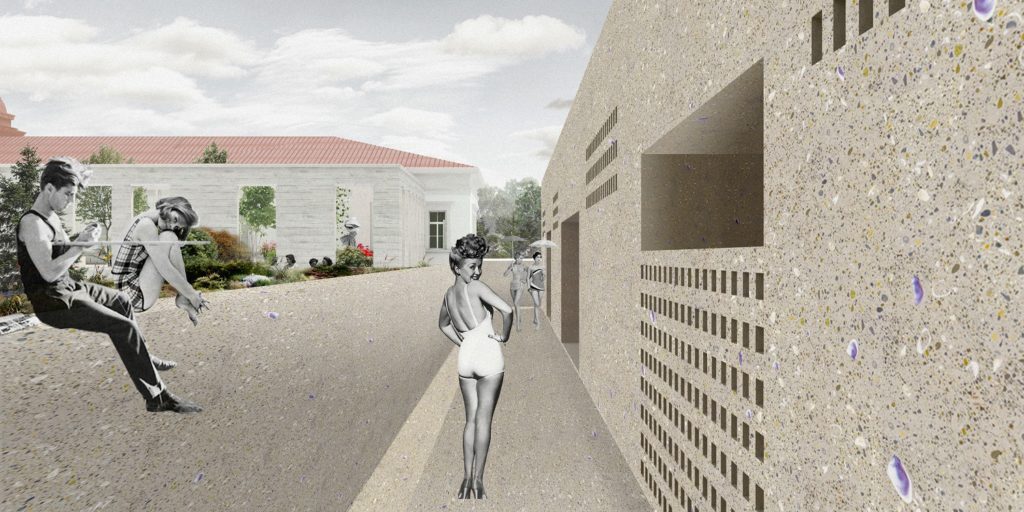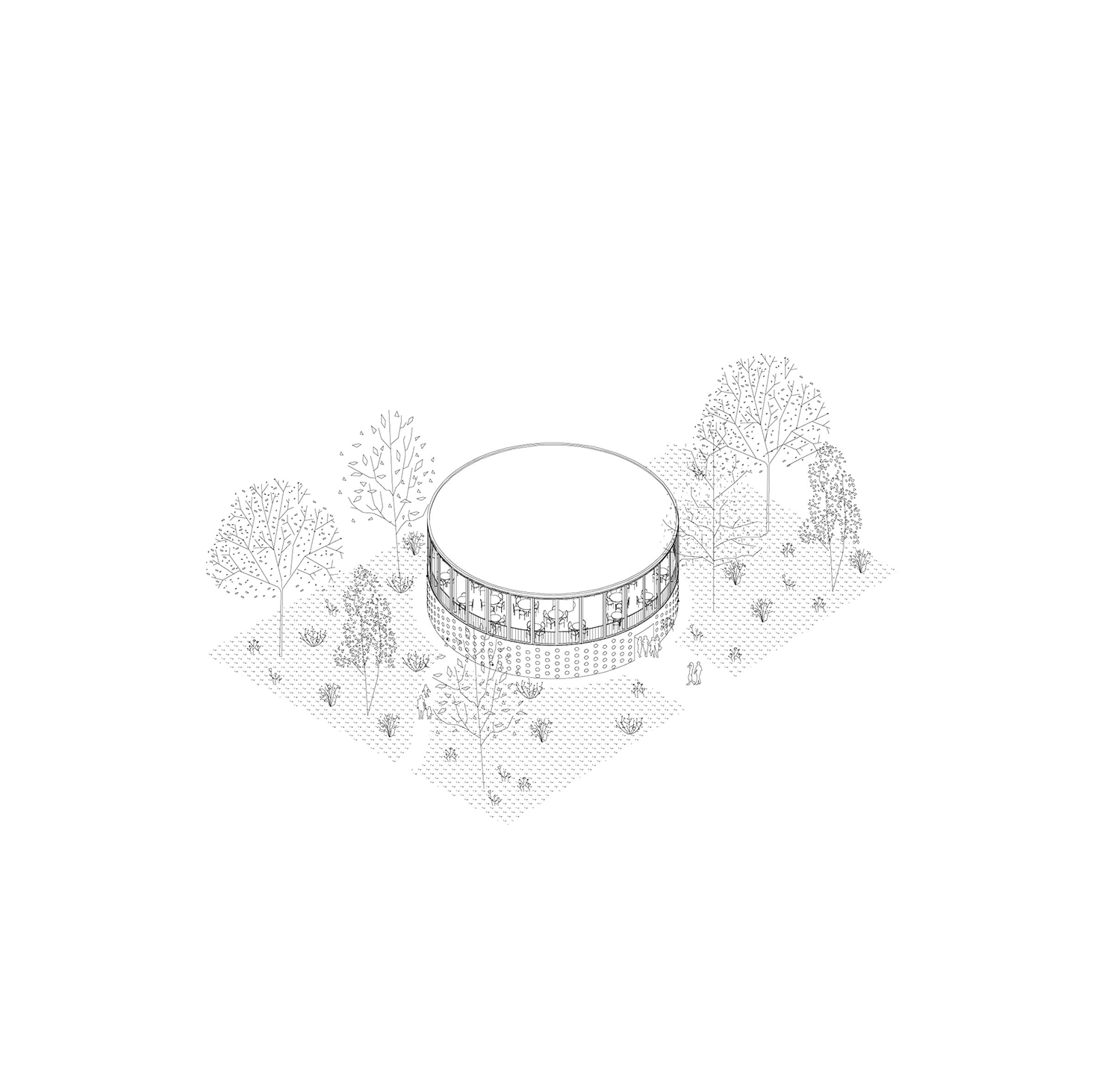Liepāja
is a city in western Latvia, located on the Baltic Sea. In response to an open call to revive the old bathhouse situated in the coastal park, we proposed a scheme that aims to strengthen the site’s existing qualities. The program was divided into three separate buildings that are scattered across the site. The old bathhouse is refitted as a hotel and is accompanied by a new bathhouse and panoramic restaurant.

Concept & plan layout
In our proposal, we aim to strengthen the existing characteristics of the site. The coast-side park and the beach are of great importance to Liepaja, and it’s surrounding. We propose to restore the connection for cyclists and pedestrians situated at the back of the old Bathhouse. Along with this new access, we placed the new bathhouse, square and restaurant, which is a continuation of the park’s leisure functions that can be found further down the path.
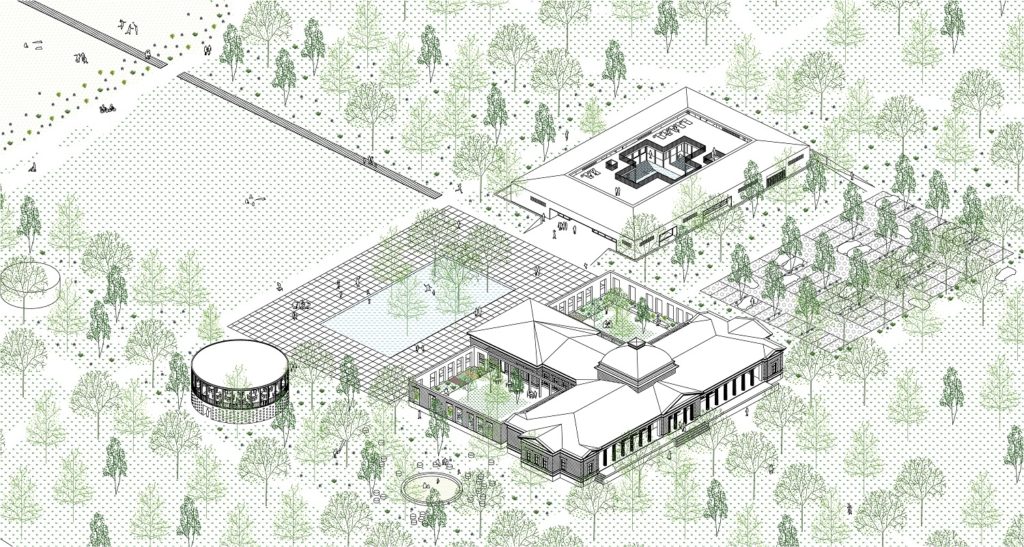
The historical presence of the old bathhouse towards the street is preserved. The new building volumes are set back on the terrain and take on a more modest appearance. The original programme is removed from the old building and placed in a new volume at the back of the terrain. The old bathhouse is restored and refurbished to fit guestrooms. On the other side of the plot, a new restaurant is created.
The buildings are conceived as solitaire objects in a green landscape. In the pocket between the bathhouse, the restaurant and the old bathhouse, we created a new square. In the centre of this open space is a water plane that can provide cooling in summer or be used for ice skating in winter. The existing trees are left untouched.

The old bathhouse
The facade of the old bathhouse is restored to its original glory. At the back of the building, two new gardens are created. These gardens serve as a buffer for the guestrooms towards the more public areas surrounding the building. The outside wall completes the volume. The openings in the outer walls allow a continuous view from inside the rooms. A new arcade with a glass roof ties the new gardens together with the existing bathhouse.
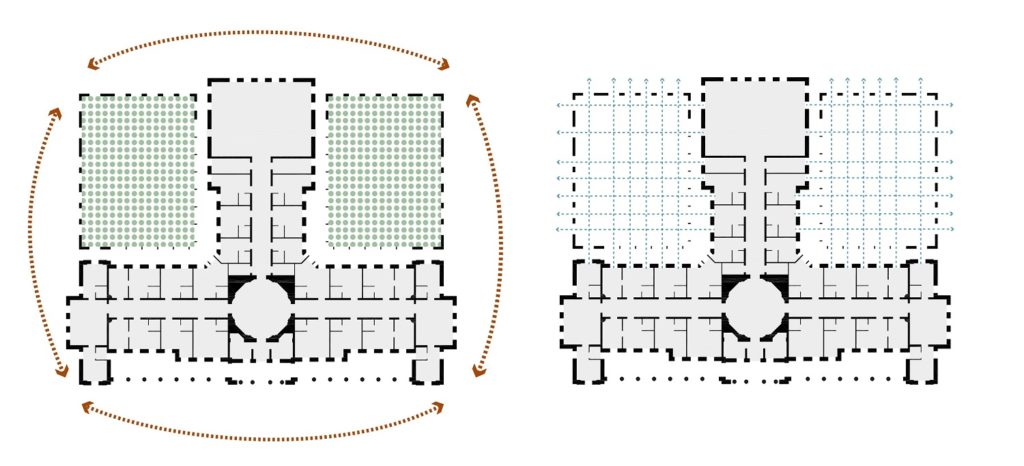
The interior is refurbished with respect for the history of the building. Old elements are recuperated where possible. The reception is located in the central hall. In the three wings, you can find a variety of guestrooms, staffrooms and a breakfast area.
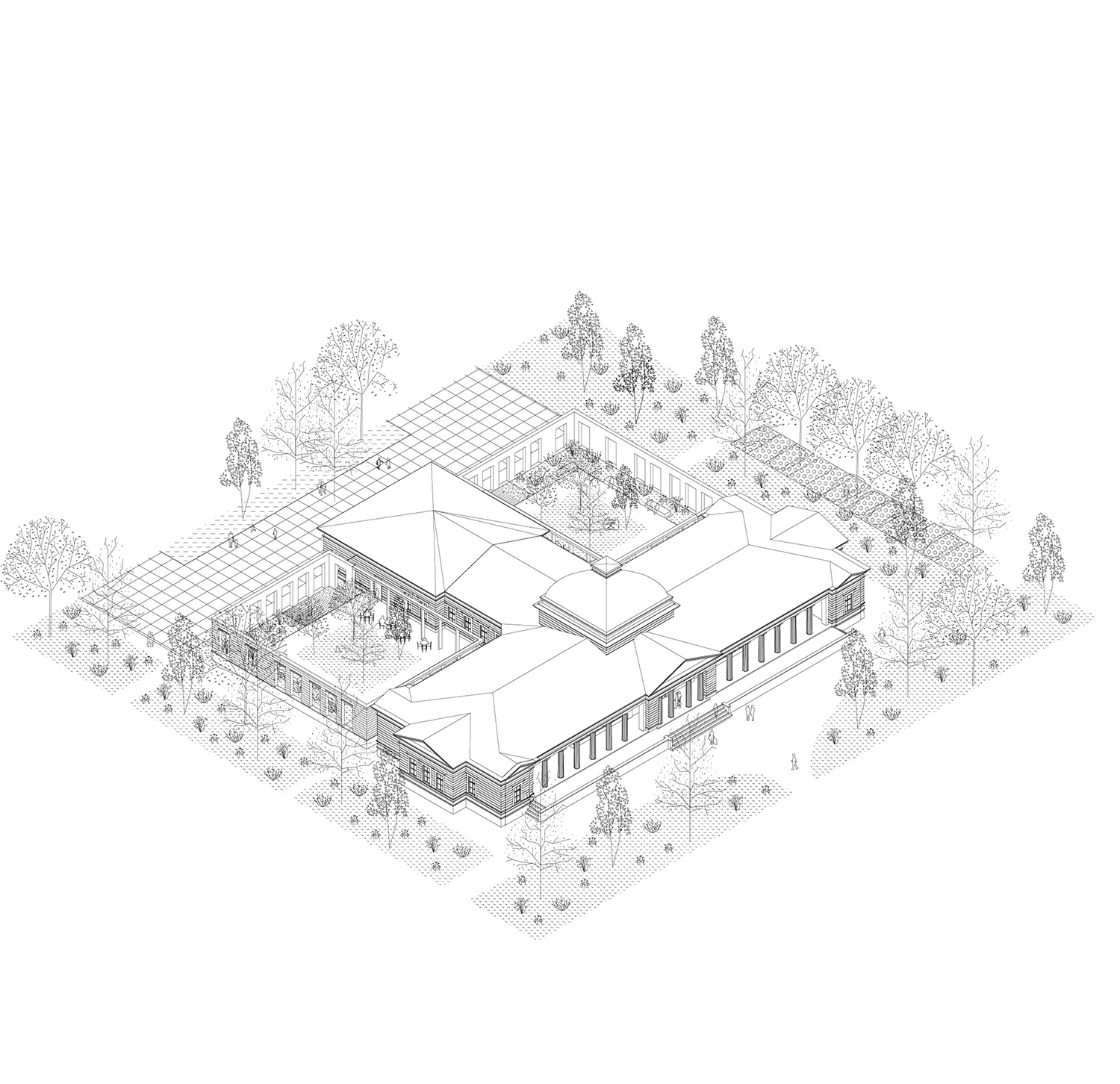
The new bathhouse
is conceived as an ‘introvert building’. The outside blends into the landscape. The building is embedded in an artificial hill separated from the volume by a continuous path.
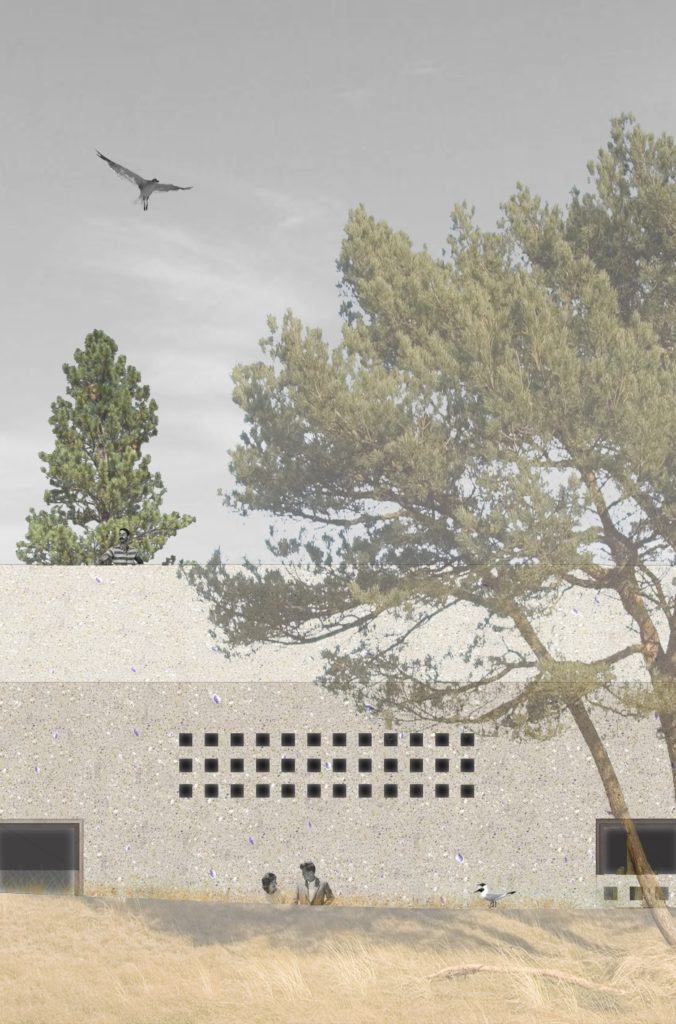
The interior works as a layered structure wrapped around the main baths in its core. Visitors are invited to discover the building as a sequence of rooms. You can eighter walk from room to room or use the central circulation as a point of orientation.

The different bathing areas variate in size, height and climate, to create a tactile experience. The main hallway draws daylight through a continuous gap between the floor of the roof terrace and the pitched roof.
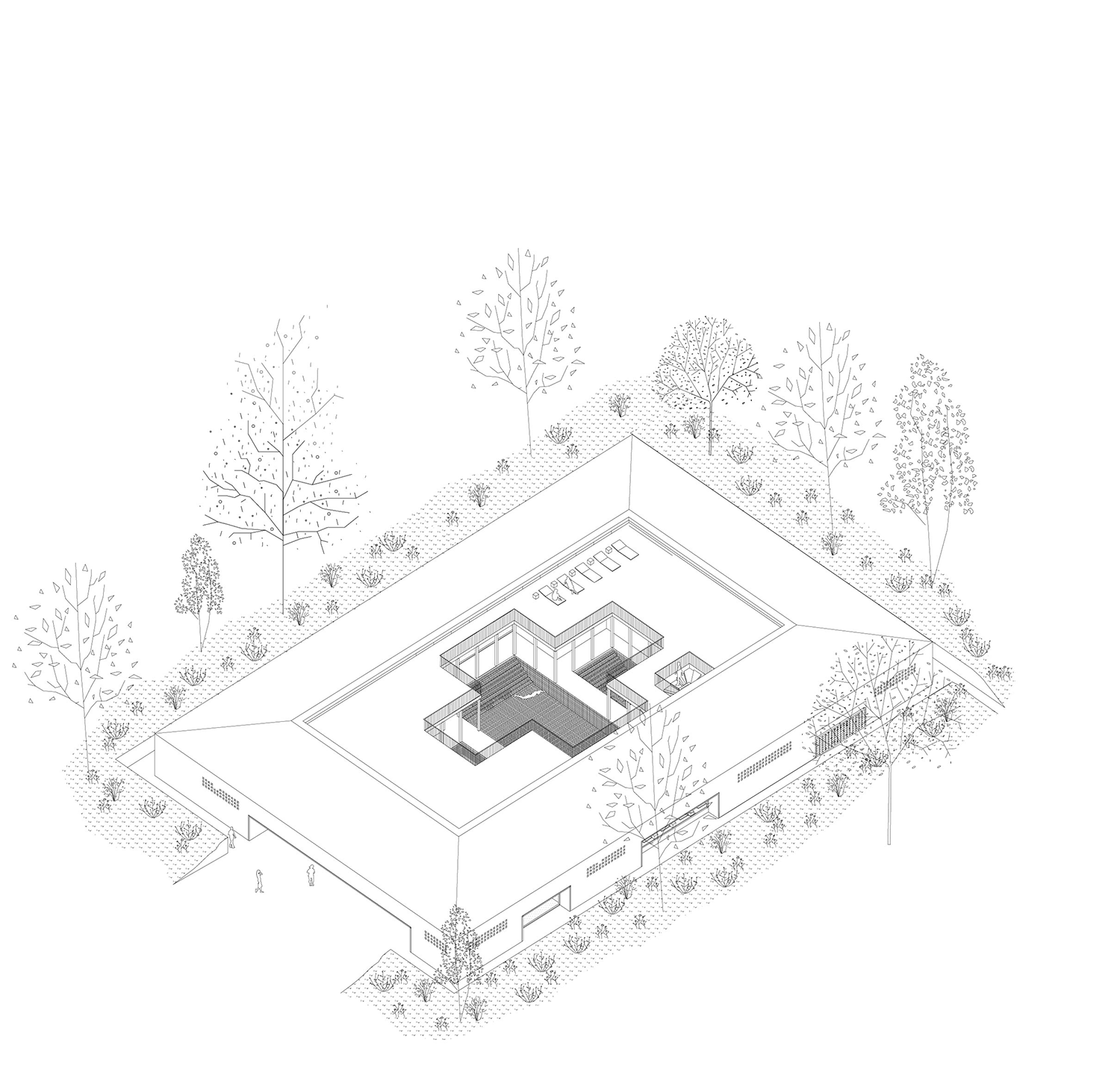
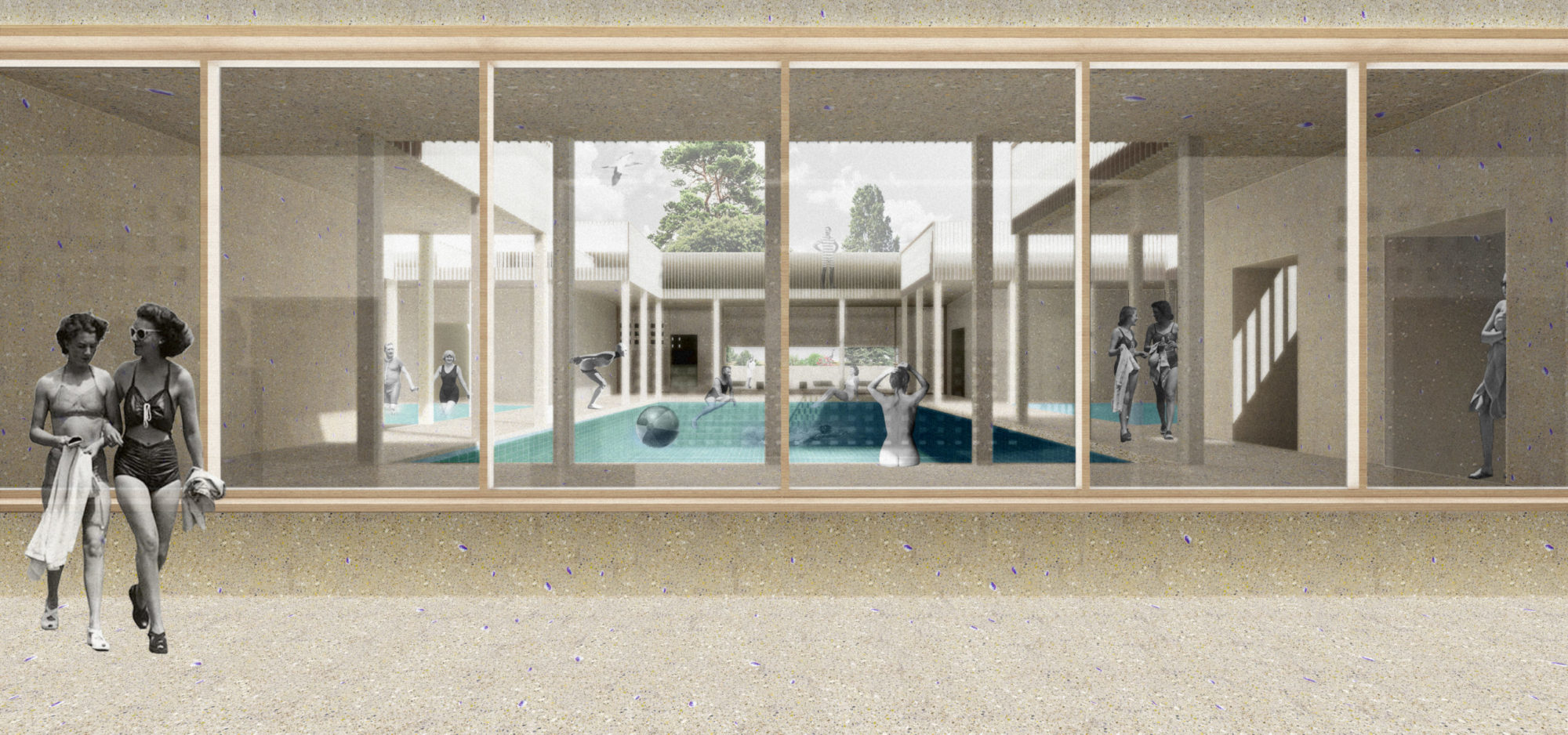
The restaurant consists of two levels. The main round dining hall is placed on top of the rest of the programme. In this way, the view is open to all sides, and the daylight can be drawn deep into the building. The open structure makes the space multifunctional. Besides serving as a restaurant, it could also be used for temporary events (concerts, congress, weddings,…).
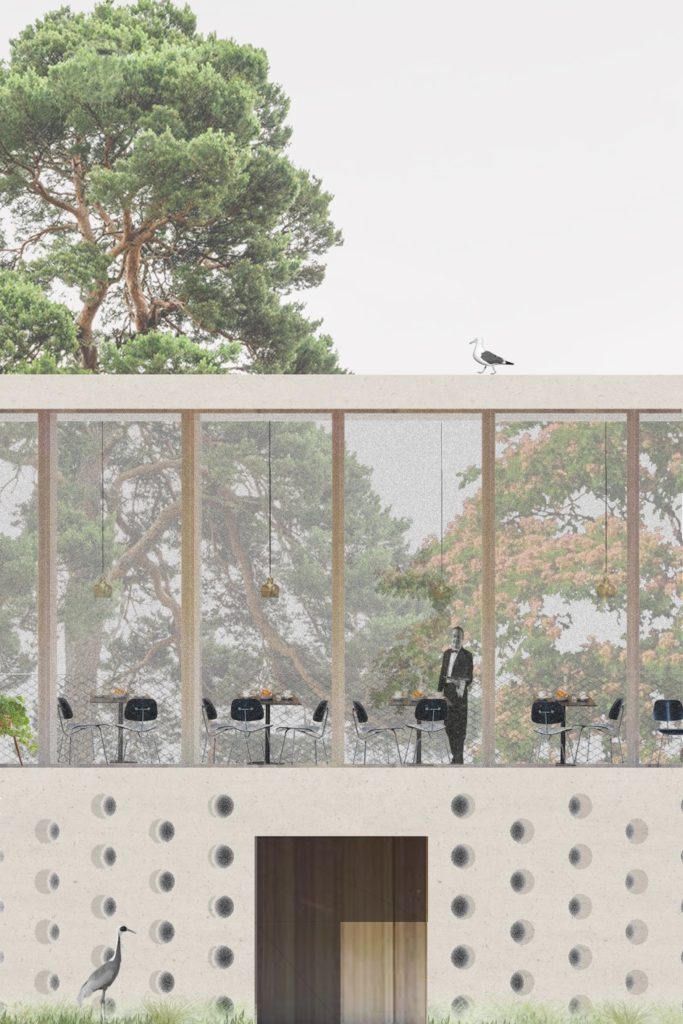
The guest entrance is located at the square. You can take the spiral staircase or platform elevator in the entrance hall that leads to the dining area. At the back of the building is a separate entrance for the staff and deliveries. A different service staircase connects the kitchen with the dining area.
